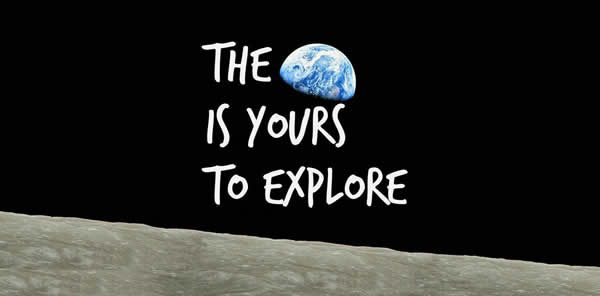Uncategorized
Our Predictions about Pluto: Getting it Right/Getting it Wrong

Back in June, my research colleage Doug Hamilton and I put out a paper in Nature magazine about the four small moons of Pluto. The timing was not accidental. Although the paper was the culmination of years of work with the Hubble Telescope, we knew that a lot of our predictions would be tested barely a month later, when the New Horizons spacecraft passed Pluto. Making predictions that might be proven wrong is part of the fun, and also part of the danger, of scientific research.
As we all know, the... read more ❯
NASA Mars acronym fun

Today I've got something different. Today NASA announced the discovery of hydrated salts in some dark slope features that form during the spring on Mars. These "recurring slope lineae", or RSLs, were discovered a few years back, and they form on steep slopes every spring in a few places on Mars. There's been a big debate over whether these things are formed by flowing water (which would be big news: flowing water on Mars today, right now, where we can witness and study it, not just billions of years ago in the distant past - these RSLs could be an... read more ❯
A wind-levelled surface

A Piece of Mars: In this 676x380 m (0.42x0.24 mi) scene, the high-standing hills here were all carved by sandblasting, by a wind that probably blew from right to left. Ripples in the valleys show that this erosion is still occurring today. (HiRISE ESP_041864_1745, NASA/JPL/Uni. of Arizona) read more ❯
The Slumbering Dwarf Awakens: Pluto is about to come back into the limelight

After the busiest July of our lives, the New Horizons team members have finally caught up on sleep. A few of us have even had a chance to take vacations. It's good that we're rested up, because an onslaught of new data from Pluto is about to begin.
Right now, 95% of the data obtained during the July 14 flyby is still stored on the spacecraft. After a quiet August, new images will start... read more ❯
Telling Pluto's Story, One Fragment at a Time

When you begin a new research project, you usually have expectations about where it will lead. Most projects take you or less to the expected destination. Some go nowhere. However, every now and then a project picks you up and makes you feel like you're just coming along for the ride.
Today, in the journal Nature, we have published the results of a research project that fits solidly into the third category.
Our original plan was straightforward. We... read more ❯
New Explorers on the OurPluto Ballot, April 2

We have added three new historic explorers to the OurPluto ballot today. Keep those great ideas coming in! I have been learning so much.
Several people nominated the renowned 10th-century explorer and cartographer Muhammad al-Idrisi. He traveled as far west as Ireland and as far east as China, mapping much of the known world in the process. His exquisite maps were still being used centuries later. The title of his compendium of geographic information roughly translates from the Arabic as The Pleasure of Him Who Longs to Cross the Horizons. How appropriate it will be for a spacecraft named New Horizons... read more ❯
More Nominations for OurPluto

We continue to receive a fascinating collection of nominees for the OurPluto campaign. Here are a few that we recently added to the ballot.
Several wrote to remind us of the iconic prints by Gustav Doré, a French artist from the 19th century who illustrated an 1861 edition of Dante's Inferno.
In the category of historical explorers, we learned about Michał Boym: "He is notable as one of the first westerners to travel within the Chinese mainland and his Flora Sinensis was the first description of an ecosystem of the Far East published in Europe. Boym also published the first dictionary to translate between Chinese... read more ❯
OurPluto Campaign, Day 6

The OurPluto naming campaign has been an exhilarating experience for me so far. The amount of thought that our site visitors have been putting into their nominations astounds me. You can visit the Site News page for regular updates. Today I would just like to highlight a few of the new names that we added to the ballot last night.
On the list of scientists and engineers, we have added Carl Pulfrich, 1858-1927. Although he died before the 1930 discovery of Pluto, he contributed in a critical way—he invented the blink comparator. This is a device that lets you switch back and... read more ❯
The Mapping of Pluto Begins Today

Pluto is just 3.5 pixels across in the latest images from the New Horizons spacecraft. That's nine square pixels. You can't do much with nine pixels. You might be able to see crude patterns of light and dark, but you probably wouldn't call it a map. Still, it's a start.
In a few months, this will all change. Craters, mountains and other landforms will take shape before our eyes. When New Horizons flies past Pluto in July, we will see a new, alien landscape in stark detail. At that point, we will have a lot to talk about. The only way... read more ❯
Dunes ignoring small hills

A piece of Mars: What happens to dunes as they move over rough terrain? This is what a barchan looks like on a relatively flat surface. If the hills are smaller than the dune, then it does its best to pretend they don't exist, like the one in this image. It's 175m (574ft) wide and 190m (623ft) long, with a slipface indicating overall migration to the northeast. (HiRISE ESP_039524_1445, NASA/JPL/Univ. of Arizona) read more ❯